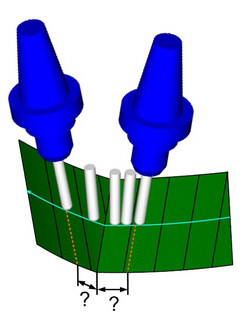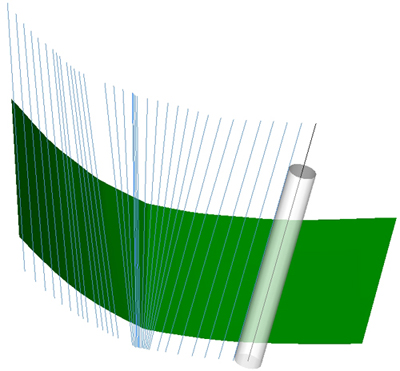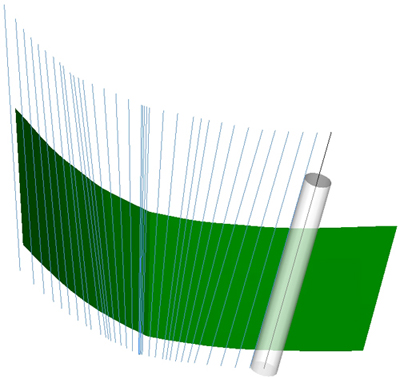
This option is used when the drive surface geometry has two crossing curved surfaces with different isometric directions. To make the tool axis movement smoother, on the edge where one surface isometric direction rolls over to the other surface isometric direction, a fanning distance is applied. The fanning distance is the distance from the crossing point of the surfaces and the point where the cross fading of the tool axis orientation begins.

NOTE:
Cutting with the side of the tool requires a proper definition of the best side direction at each position of the toolpath. In the case of surfaces that are almost ruled and have a slight curvature in the secondary direction, the best side direction between two surfaces jumps at the boundary between such two surfaces. In such case the fanning distance is applied to dampen out such sudden changes of orientation.
The following two examples show a different fanning distance. The first with 2 mm and the second with 15 mm. The toolpath is only a single cut at the lower edge. The blue lines are the tool axis vectors. Look at the point where the two faces cross. Here the fanning distance takes effect.

